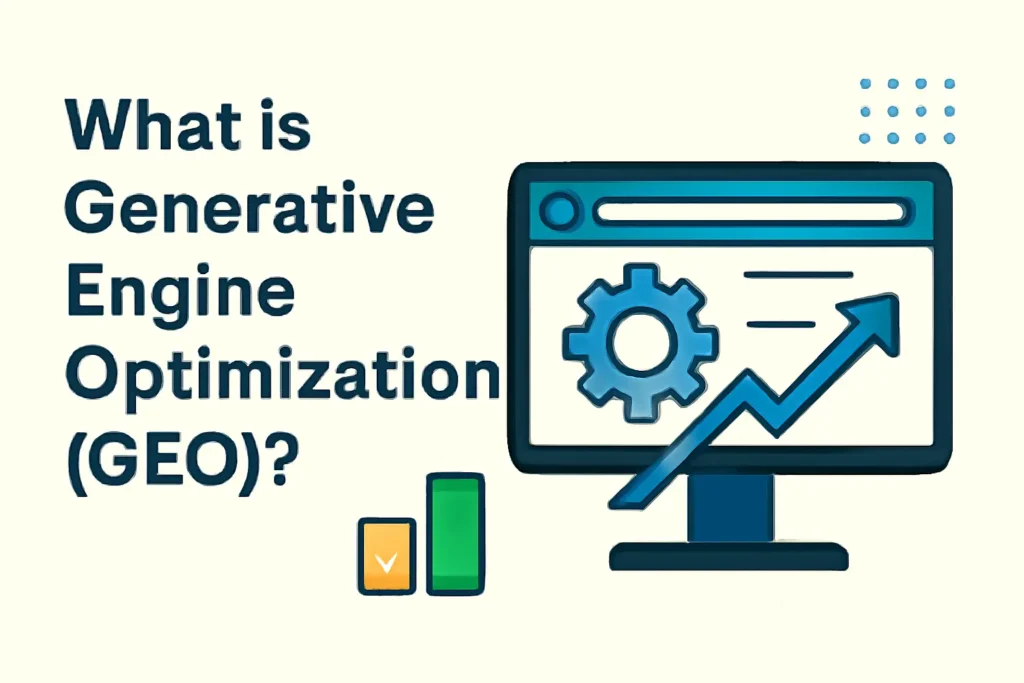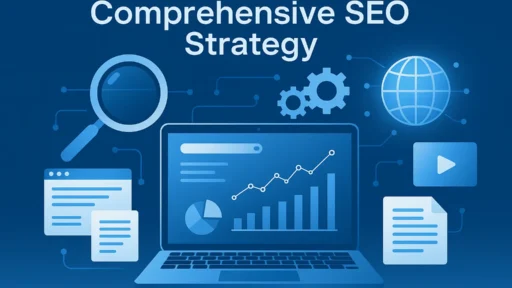The rise of AI-driven platforms like Google AI Overview, Bing Copilot, ChatGPT, and Perplexity is reshaping how people search and consume information online. Traditional SEO remains important, but businesses now need to think beyond ranking on Google’s blue links. This is where Generative Engine Optimization (GEO) strategies come into play.
Generative Engine Optimization (GEO) is the practice of tailoring your content so it gets surfaced, cited, and recommended by AI-powered search and answer engines. Unlike traditional SEO, GEO doesn’t just focus on keywords and backlinks—it prioritizes trust, depth, clarity, and structured knowledge that AI models can understand and reference.
In this guide, we’ll break down how you can implement effective Generative Engine Optimization (GEO) strategies to stay ahead in the evolving digital landscape.
What Is Generative Engine Optimization (GEO)?

Generative Engine Optimization (GEO) refers to the process of optimizing content for AI-powered answer engines such as Google’s SGE (Search Generative Experience), Microsoft Copilot, ChatGPT, and Perplexity.
Unlike traditional SEO where Google shows a list of links, AI search platforms generate answers directly. GEO ensures your content:
- Appears as a cited source within AI answers.
- Builds trust with authoritative, structured, and fact-checked information.
- Increases visibility across conversational AI and search engines.
Example: If someone asks ChatGPT, “What are the best strategies for digital marketing in 2025?”, a GEO-optimized blog on this topic has higher chances of being referenced in the AI’s response.
Why GEO Strategies Are Essential in 2025
- AI-driven search adoption is rising: According to Statista, over 50% of U.S. adults already use AI tools for information gathering.
- Generative search reduces clicks: Google’s AI Overview often gives full answers without users visiting websites. GEO helps ensure your brand is still visible.
- Authority is rewarded: AI engines prioritize credible, well-structured, and expert-backed content.
By implementing Generative Engine Optimization (GEO) strategies, businesses can maintain visibility and authority in this new era of search.
Key GEO Strategies for Businesses
1. Create Authoritative, Trustworthy Content
AI engines prefer sources that demonstrate expertise, authoritativeness, and trustworthiness (E-E-A-T).
- Use data, case studies, and references to support claims.
- Include author bios highlighting expertise.
- Publish long-form, in-depth content that answers multiple related queries.
Example: A financial advisory blog optimized for GEO might include verified statistics, compliance disclaimers, and expert commentary, increasing its chances of being cited in ChatGPT or Google SGE.
2. Structure Content for Machine Readability
AI models extract and summarize structured information more easily.
- Use clear headings (H2, H3, bullet points, numbered lists).
- Add FAQs with concise, direct answers.
- Implement schema markup for articles, products, FAQs, and reviews.
Tip: Structured FAQs with schema increase chances of being pulled into AI-generated snippets.
3. Optimize for Conversational Queries
Users now ask long-tail, natural language questions in AI tools.
- Target question-based keywords: e.g., “How does Generative Engine Optimization work?”
- Use semantic SEO by covering related entities, synonyms, and topics.
- Align with search intent by offering both quick answers and detailed insights.
4. Leverage Multi-Format Content
AI engines increasingly reference varied content formats.
- Publish blogs, videos, podcasts, infographics, and research papers.
- Provide transcripts for multimedia content (for better indexing).
- Ensure images and visuals are optimized with descriptive alt text.
Example: Perplexity often cites YouTube transcripts—so adding optimized transcripts to your video content boosts GEO potential.
5. Build and Signal Authority Through Backlinks
While GEO is different from SEO, backlinks remain valuable.
- Earn mentions in trusted publications.
- Contribute to industry reports, whitepapers, and expert roundups.
- Leverage digital PR campaigns to boost credibility signals.
The more credible your content appears across the web, the more likely AI models are to trust and cite it.
6. Continuously Monitor AI Engine Visibility
Traditional SEO tools track Google rankings, but GEO requires new monitoring practices.
- Test prompts in Google AI Overview, Bing Copilot, and ChatGPT to see if your brand appears.
- Track citations and references in generative answers.
- Adjust content strategy based on observed AI outputs.
Tip: Early adopters of Generative Engine Optimization (GEO) strategies will have a strong competitive advantage as AI-driven search evolves.
The Future of GEO in Digital Marketing
Generative search is not replacing SEO—it’s expanding it. In the future, businesses that combine traditional SEO with GEO strategies will dominate visibility across both search engines and AI-driven platforms.
Emerging trends to watch:
- Personalized AI answers based on user history.
- Voice and multimodal search (images + text + voice).
- Higher reliance on verified sources as misinformation concerns grow.
Conclusion
Generative Engine Optimization (GEO) strategies are no longer optional—they’re a necessity in 2025 and beyond. By creating authoritative, structured, and conversationally optimized content, your business can stay visible not only in Google search but also in AI-driven answer engines like ChatGPT, Bing Copilot, and Perplexity.
Now is the time to adapt. Implementing GEO strategies today will ensure your brand remains a trusted source of information in the rapidly evolving world of AI search.





